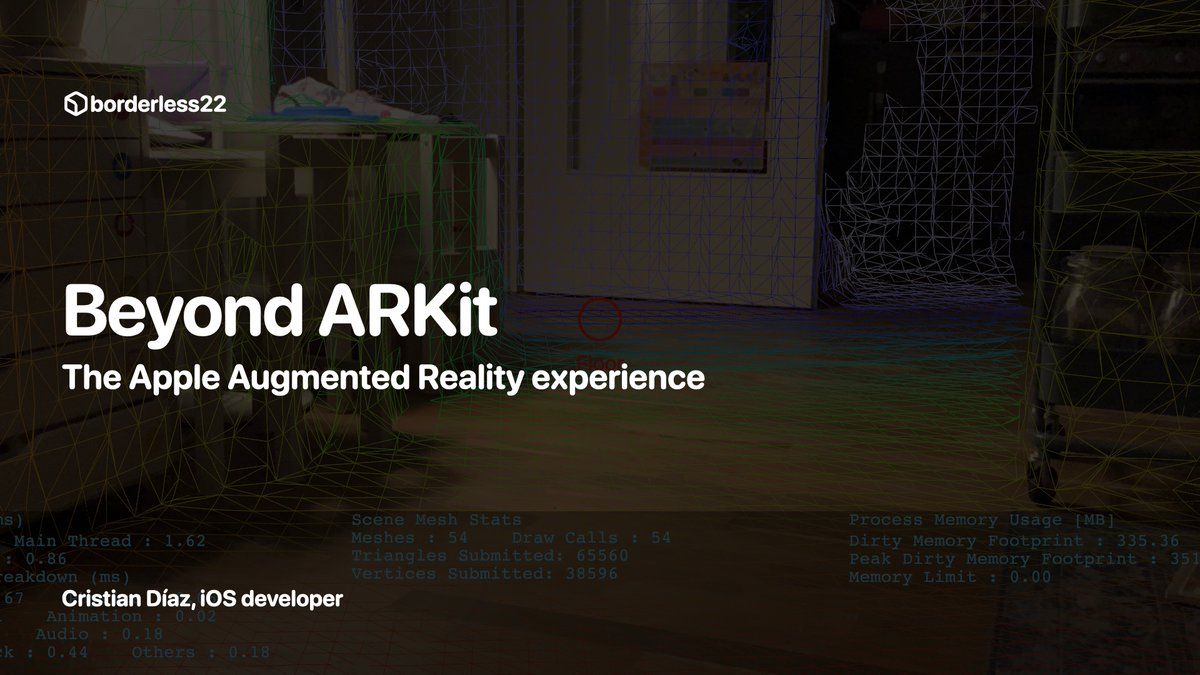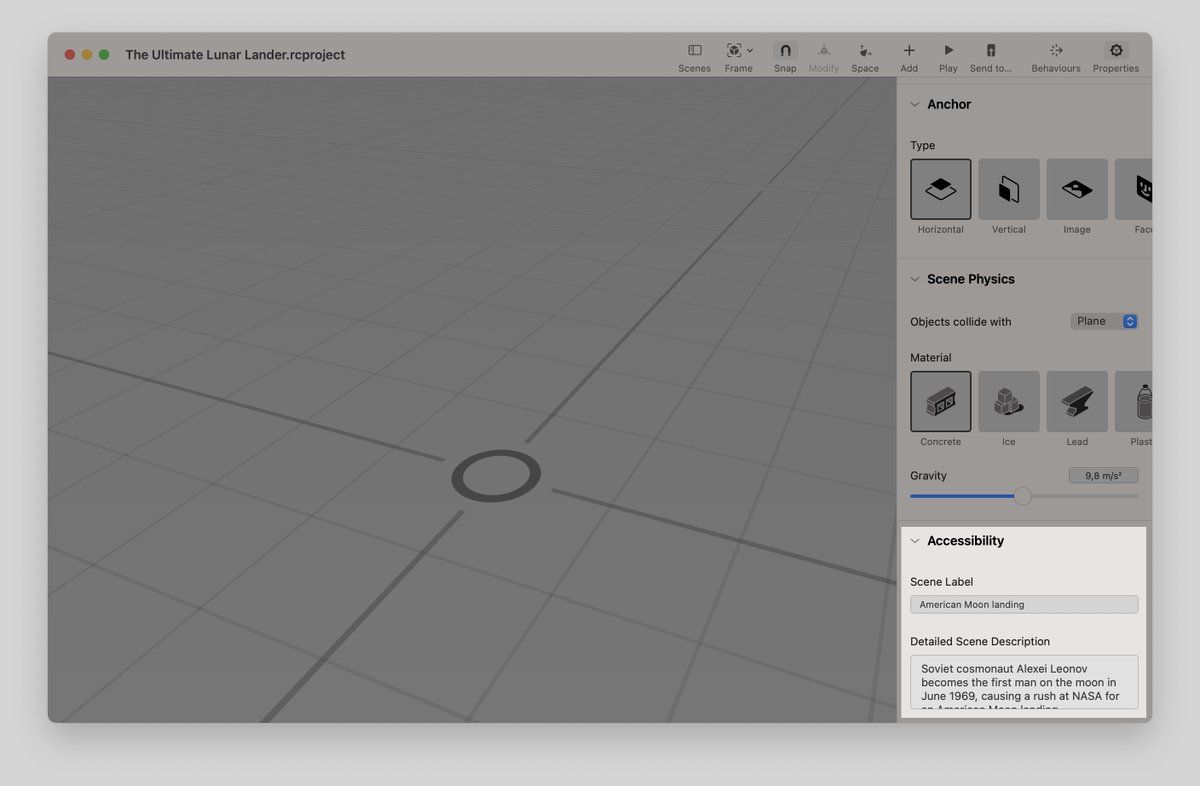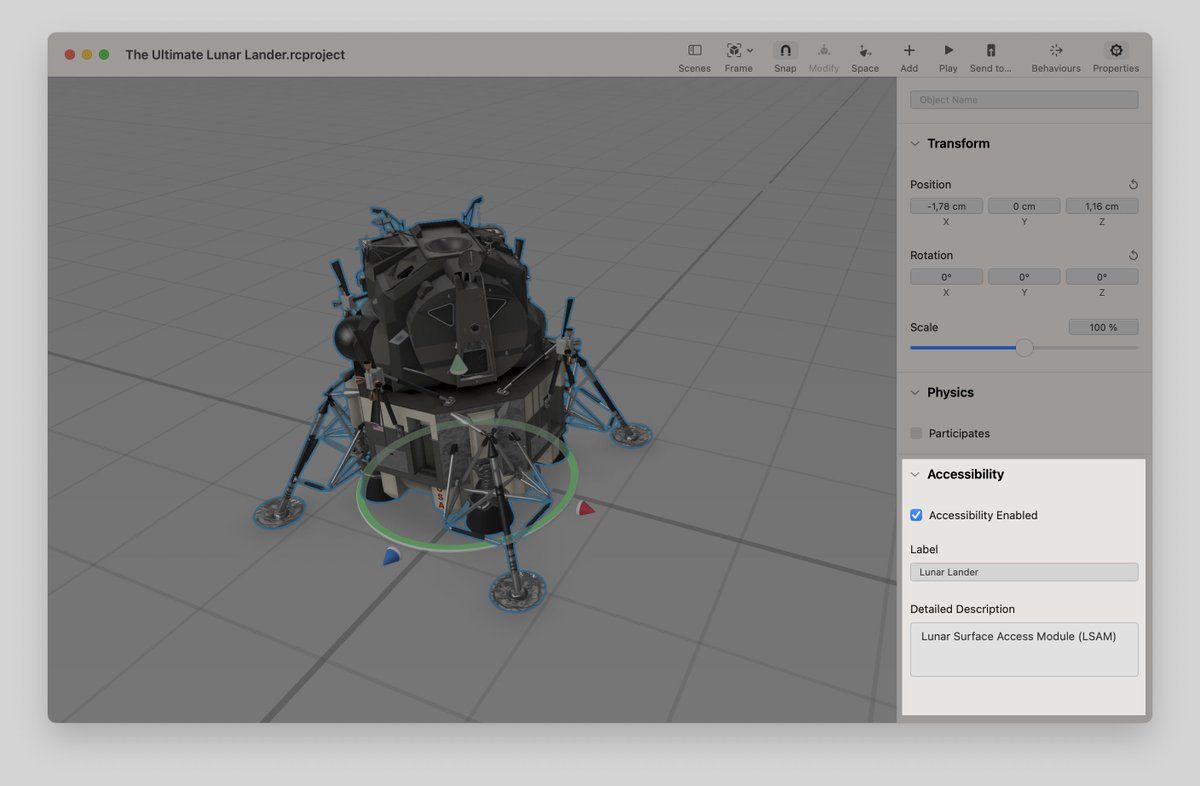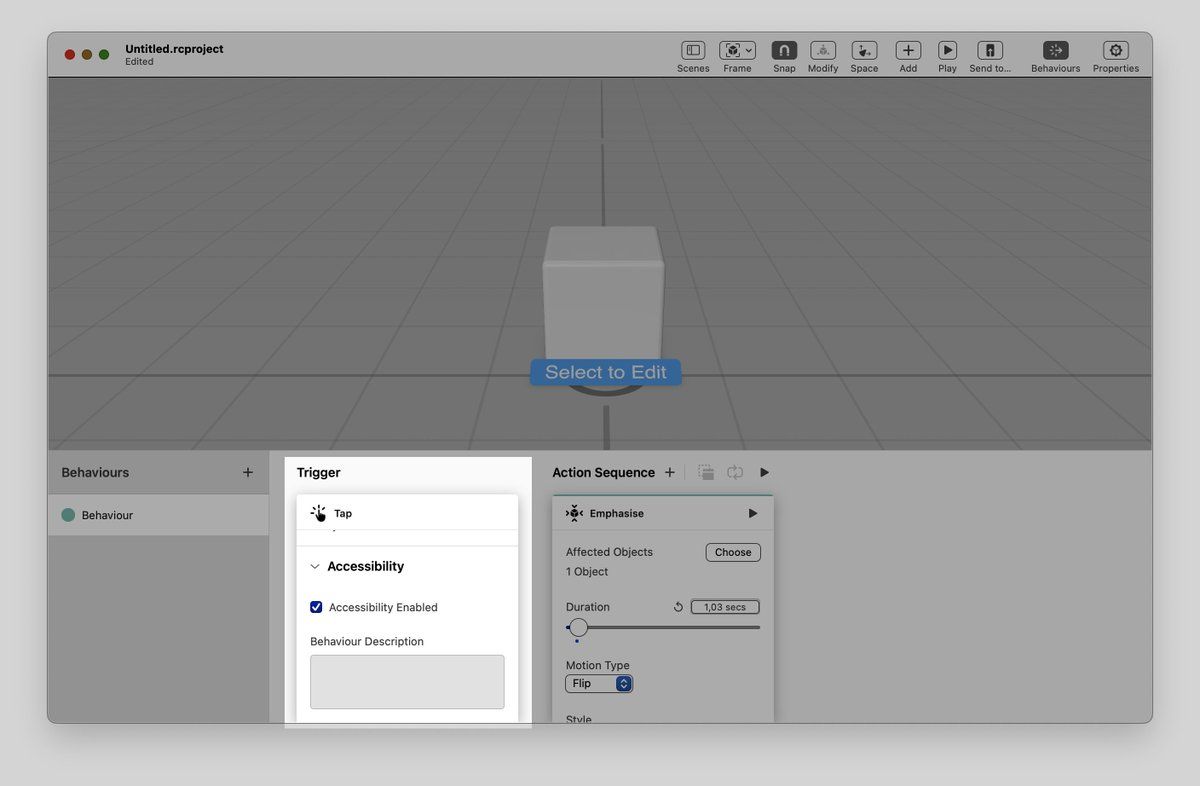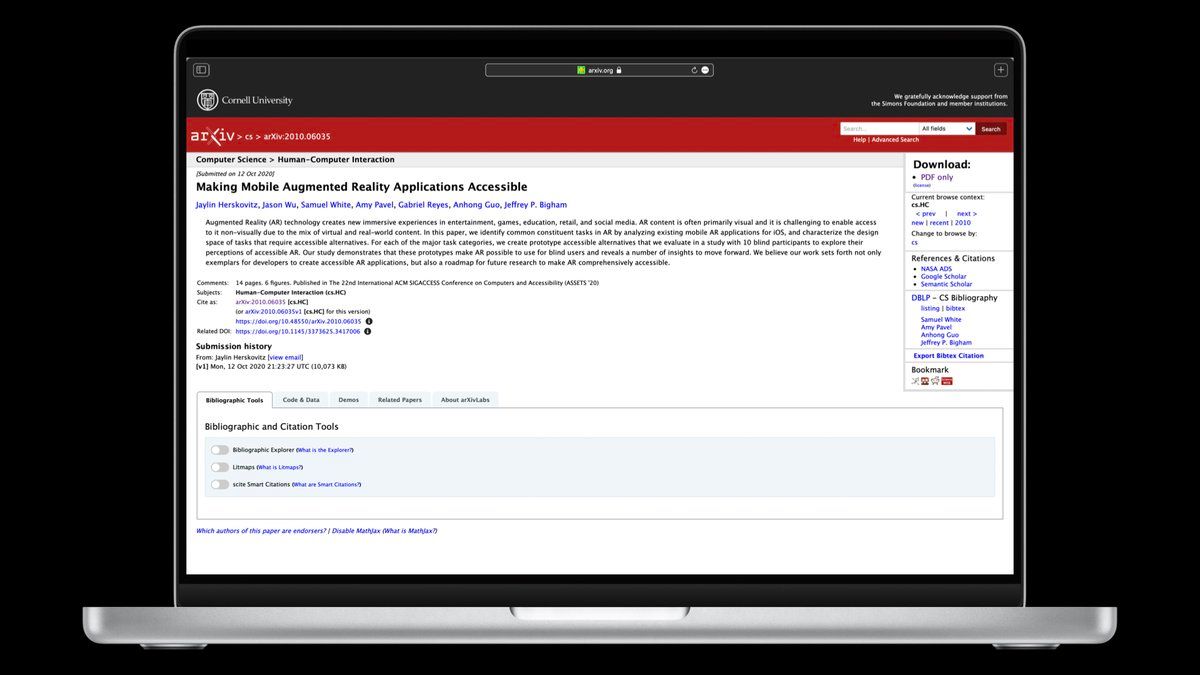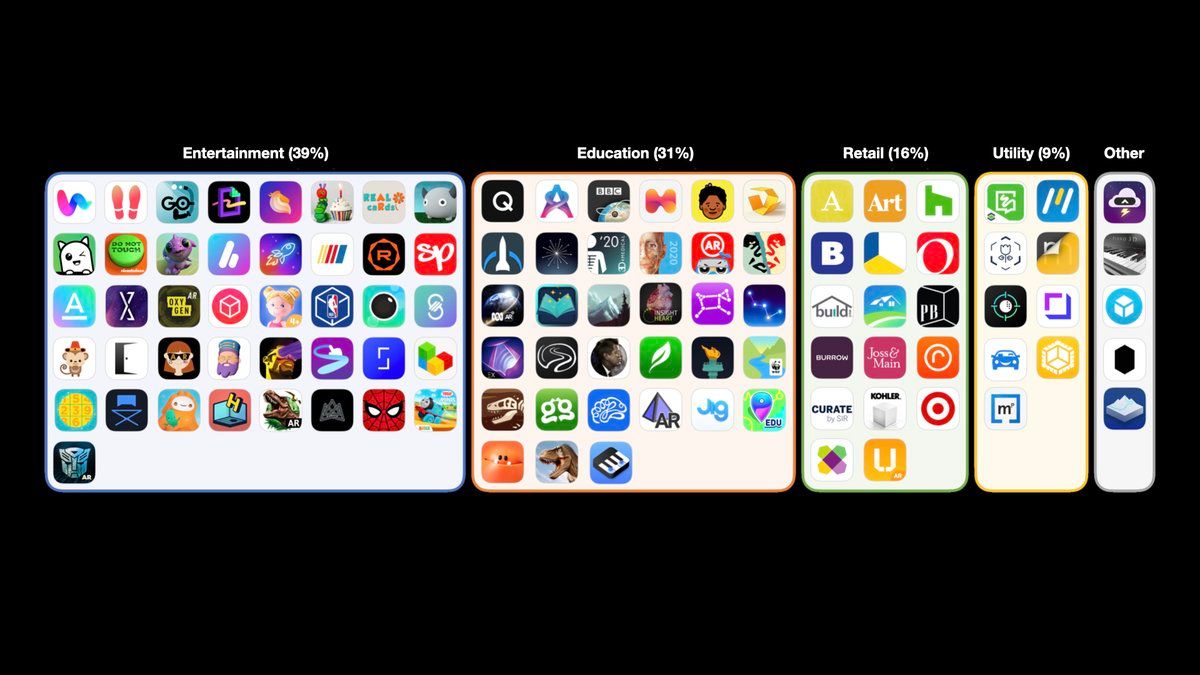-
I got to talk about Augmented Reality at BorderlessEng. The talk included some developer tips and an overview of how the Apple AR platform has changed, but the best part was the section on making Augmented Reality Applications Accessible 🧵1/24 #Accessibility #AR
-
I began with my currently preferred definitions of Augmented Reality and Disability Augmented Reality: understood as a “Combination of digital and physical worlds” with “Real-time interactions” and a degree of “Identification/segmentation of virtual and real elements” 🧵2/24
-
Disability: Defined as the “The results of the interaction between individuals with a health condition and the features of their environment” 🧵3/24
-
Also mention, the responsibility of fighting the limited social support and assuming that almost everyone will temporarily or permanently experience disability at some point in their life This is my interpretation of the current WHO definition web.archive.org/web/20220920025713/https://www.who.int/health-topics/disability 🧵4/24
-
Then continued presenting the accessibility capabilities included in Reality Composer developer.apple.com/augmented-reality/tools/ First labeling a scene and then doing the same for an imported 3D model 🧵5/24
-
After demonstrating the developer perspective including metadata, I wanted to show a subjective experience from someone who wanted to use it but couldn't see the screen 🧵7/24
-
And then, from the perspective of somebody using Voice Control. The fact that so much can be achieved with so little effort is impressive. Accessibility Services apple.com/accessibility/ are excellent at working with 'less than ideal contextual information' scenarios.👏 🧵8/24
-
But we can do better. Assistive technologies have been developed to work on graphical user interfaces (GUIs) by identifying common tasks and then creating accessible alternatives. Therefore it should be possible to apply the same principle to Augmented Reality interfaces 🧵9/24
-
And that is exactly what Making Mobile Augmented Reality Applications Accessible arxiv.org/abs/2010.06035 is about 🧵10/24
-
The analysis shows that there are 5 basic tasks required to interact with an AR app: - Observing AR Content 👓 - Establishing Physical/Virtual Correspondence ⚓️ - Creating Virtual Content 🎨 - Transforming Virtual Content 🕹 - Activating Virtual Content ▶️ 🧵12/24
-
👓 Observing AR Content: The explorative task, look around, perceive the size, shape, color, style of a virtual object. Relationships between objects can also be checked either between virtual and virtual or between physical and virtual 🧵13/30
-
⚓️ Establishing Physical/Virtual Correspondence: It's used for finding where to anchor virtual content. This task is present when scanning for surfaces, images, objects, or marking a location in space 🧵14/30
-
🎨 Creating Virtual Content: The constructive task. After the scanning process is complete, the next most common task is to place an object at a defined point 🧵15/30
-
🕹 Transforming Virtual Content “Traditional” 3D manipulations. Position, Orientation, Scale, and Deletion. Each manipulations' goal is highly dependent on the context 🧵16/30
-
▶️ Activating Virtual Content The selection task. Trigger sound, narration, animation, or physics-based motion. This task is by far the most diverse 🧵17/30
-
With this list of basic tasks, it is now possible to make them accessible to everyone 🧵18/24
-
First, accessibility services must be made aware of virtual content, and then a way must be provided for developers to feed metadata to it You can see this concept applied on the Reality Composer accessibility options in combination with the AR views. 🧵19/24
-
Then, it is important to know that simply making accessibility features available for developers to add to their apps might not be enough Also, more advances will need to be made in 3D space semantic description and language processing 🧵20/24
-
And finally, consider the benefits of creating virtual versions of the surroundings with the aim of using them with augmented reality content 🧵21/24
-
This mixed-reality scenario relies on the fact that Virtual Reality is easier in some ways to make accessible because the system knows (in theory) about all content in the virtual world 🧵22/24
-
This presentation made me realize that AR is capable of also augment accessibility and become a valuable technology for people with disabilities 🧵23/24
-
Special Thanks and References craft.do/s/K3k6ACmoawMe7W ABaillyLloyd AtarayoSD basthomas dadederk heckj lennartstolz MarcoInEnglish marius_const matkoin MaxxFrazer romanroibu RoxanaJula Sommer StrangeNative Tgo1014
-
There is a video now available with subtitles on English and Spanish (generated with whisper) youtu.be/ev0k0kS34BQ
